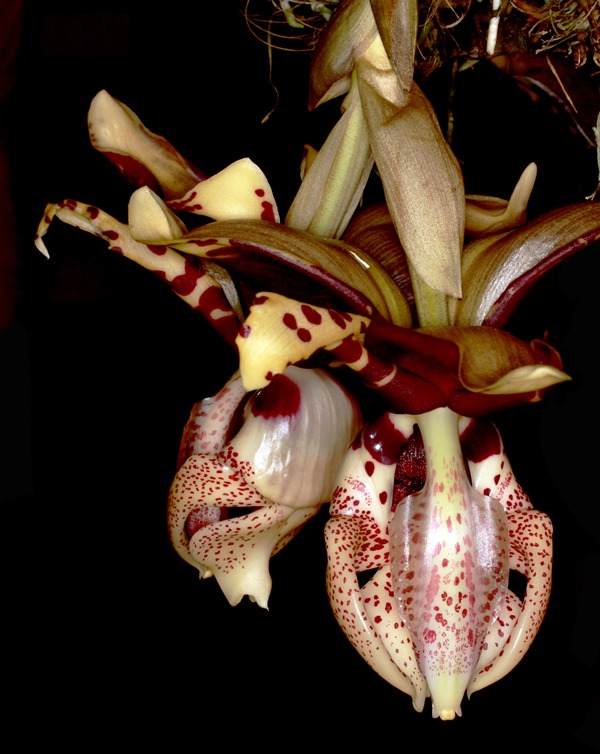
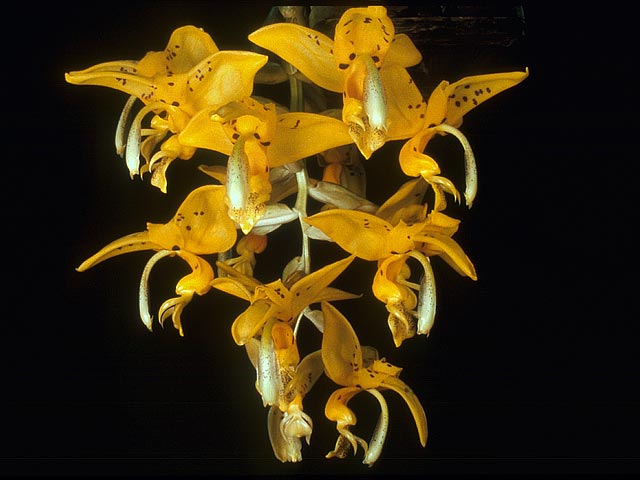
Award photos of a couple spectacular Stanhopeas: Left: Stanhopea tigrina 'Rollie Wilson' AM/AOS and CCM/AOS, exhibited by Roland Wilson at Great Lakes Center monthly judging July 18, 2015, photo © 2015 Katie Payeur. Right: Stanhopea jenischiana 'Catorce' AM/AOS, exhibited by Ron Kaufmann at Long Beach monthly judging at our meeting on August 23, 2004, photo © 2004 Loren Batchman.

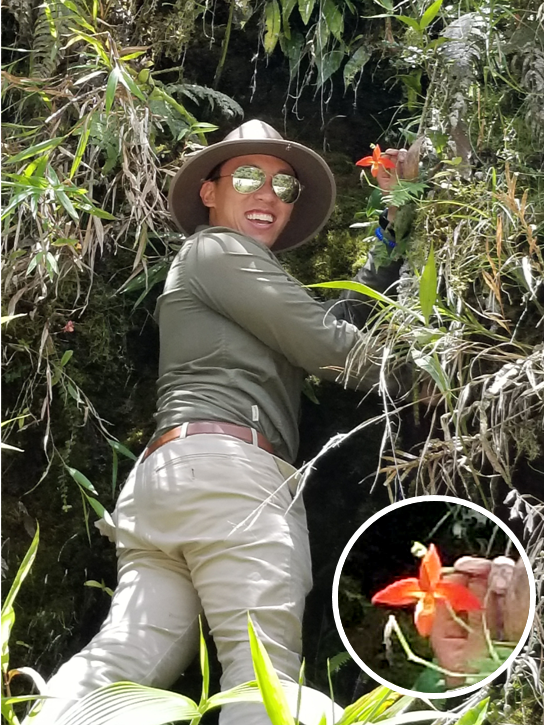
Brandon does Ecuador! And finds a Phragmipedium besseae!
Brandon Tam is passionate about his career as the Orchid Collection Specialist at The Huntington Library, Art Collections, and Botanical Gardens in San Marino, California.
Brandon’s grandmother first introduced him to orchids when he was seven by giving him a white Cymbidium. He volunteered at the Huntington during high school, and when he graduated at age 16, Dr. James Folsom, Director of the Botanical Gardens, offered Brandon a full-time position as the Orchid Collection Specialist. Brandon has managed the collection for the past 14 years. While working with Dr. Folsom to reinvigorate the Huntington’s orchid collection, Brandon attended California State University Polytechnic, Pomona, and earned his Bachelor of Science in Plant Science degree in 2015.
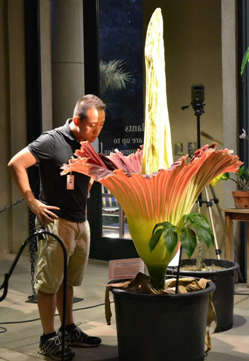
© Brandon Tam
Brandon now oversees one of the largest orchid collections in the United States, which has grown from 2,000 to over 10,000 plants in the past ten years. The Huntington’s orchid collection is housed in over 26,000 square feet of growing area, which includes the Rose Hills Foundation Conservatory and three collection greenhouses, dedicated specifically to tropical plants. He also oversees the Huntington’s 50 Amorphophallus titanum (better known as the “Corpse flower”), and has successfully bloomed six since 2014 — each one a stinky sensation that is featured in the local press.
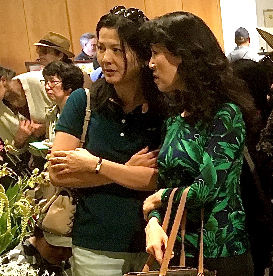
Visitors to The Huntington International Orchid Show are mesmerized by the beauty of nature's creations
Brandon is also in charge of the annual Huntington International Orchid Show, which he inaugurated in 2015, and was in charge of hosting the annual meeting of the American Orchid Society at the Huntington in 2016. He has also organized events for Orchid Digest Corporation, the Paph Guild, the Phalaenopsis Symposium, etc. You can catch a glimpse of him at these events: he is everywhere, but he moves fast, as he is usually needed at several places at once. During the annual orchid show, he walks about 100 miles and rides his appropriately green golf cart an equal distance. This is not just a guess; Brandon uses the step tracker on his cell phone.
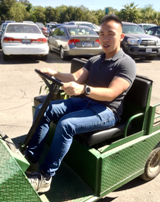
Under Brandon’s direction, The Huntington has won over 100 awards from the American Orchid Society within the last three years, which includes five First Class Certificates and three Certificates of Cultural Excellence. At the American Orchid Society Fall 2016 Members Meeting, The Huntington received The Merritt W. Huntington Award, which gives international recognition for the “Most Outstanding Orchid” in the year of 2015 for Paphiopedilum micranthum ‘Huntington’s Perfection’ FCC/AOS. In 2016, The Huntington received not just one, but two American Orchid Society Special Annual Awards! Lycaste consobrina ‘Huntington’s Finest’ AM-CCE/AOS received the Butterworth Award, which goes to the grower of the plant exhibiting the finest orchid culture. It also received the Benjamin C. Berliner award, which is given to most outstanding example of the genus Lycaste or its closely-allied genera. At the time of judging, it had a total of 287 flowers and 7 buds.
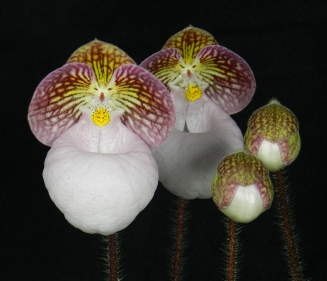
© 2015 Linden Burzell
Paphiopedilum micranthum 'Huntington's Perfection' FCC/AOS
In Brandon’s spare time, he loves to travel, and of course... EAT! He joined Harold Koopowitz and others on a trek in Ecuador led by Pepe Portilla, where the group saw many wild orchids and focused on the study of Selenipedium aequinoctiale. Additionally, Brandon was elected as Trustee of the American Orchid Society, for a three-year term, which started March 2018. He is a member of the Publications Committee of Orchid Digest Corporation.
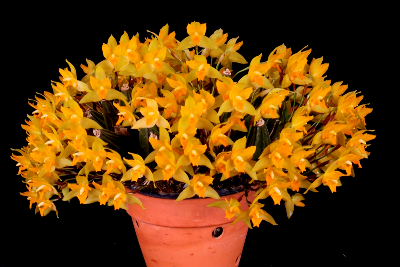
© 2016 Arthur Pinkers
Lycaste consobrina 'Huntington's Finest' AM-CCE/AOS
SCOS enjoyed Brandon's January 27, 2020 program, leading off what was to be our year-long celebration of our 70 years of service to orchid growers in Southern California, on "Orchids at The Huntington: Past, Present, and Future". The Huntington was then celebrating its 100th anniversary year. 2020 did not turn out exactly as we expected, and now the orchid story resumes in 2022, for SCOS and for The Huntington.
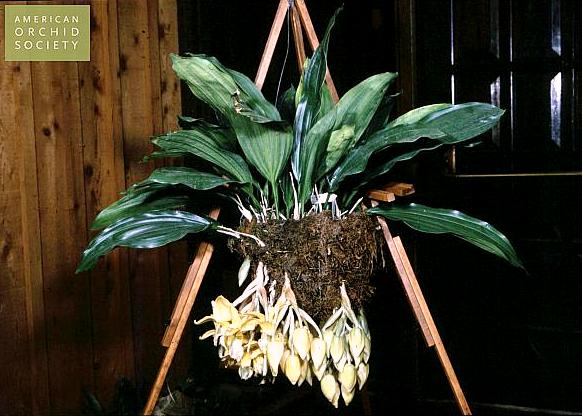
© 1984 AOS
Stanhopea wardii 'Serene' CCM/AOS, exhibited by Martin Nedderman on August 28, 1984 at our monthly meeting. Under the right conditions, these plants can get big!
We have seen many intriguing Stanhopeas at shows (although, we went a full two years without attending an orchid show). They are always weird and spectacular! The flowers are extremely complicated, and many are intensely fragrant as well. But which ones can we expect to grow in our area? Brandon will discuss the species that might be appropriate for outdoor growers in our area, their cultural requirements, and repotting. He will also give us a digital tour of the outstanding Stanhopea specimens in The Huntington's collection. We're sure this will be a super program!
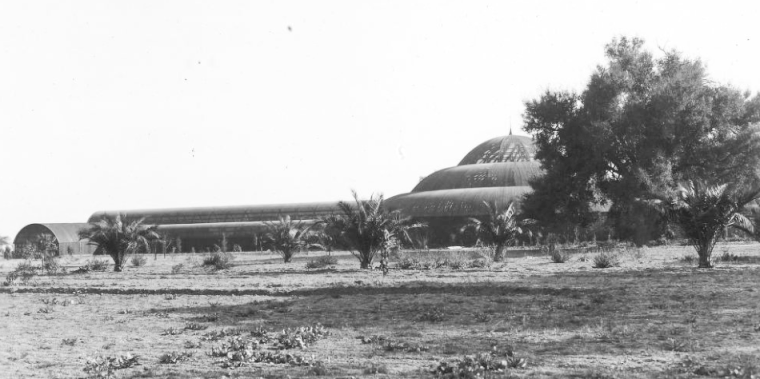
The first lath house on the Huntington estate, circa 1908, from The Huntington archives.
More than 100 years of orchids at The Huntington!
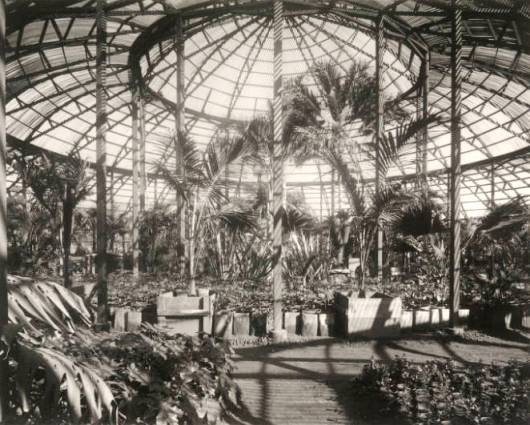
Inside the first lath house, circa 1908, from The Huntington archives.
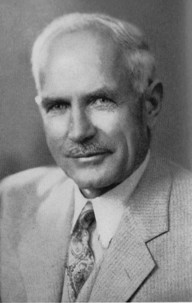
William Hertrich, Curator Emeritus of the Huntington Botanical Gardens, circa 1952
We spotted this vignette in Louis Boyle's Out West: Growing Cymbidiums and Other Flowers (1952, Times-Mirror Press, pp. 182-183). Boyle wondered about the history of outdoor orchid plantings in Southern California, and inquired of William Hertrich, curator of the gardens at the Huntington estate. The original Cymbidium plants were said to have been purchased by Henry E. Huntington during a trip to England. Hertrich responded, "I planted the first Cymbidiums in the rockery near the entrance to the Huntington home about 1910. This planting was to be an experiment to test the hardiness of various genera of orchids, including also Odontoglossums, Calanthes, Coelogynes, Miltonias, Laelias, Cypripediums, and Stanhopeas. The Cymbidium proved to be the one genus best adapted to our local climate.
"About 1920 I divided each plant into two. Thereafter this operation was repeated about every five years. However, late in May and the first week of June of 1947, rearranging the planting of the rockery required removing all of the original plants, which I then divided into smaller pieces to be placed into containers of 5-inch, 6-inch, 8-inch, and 10-inch size. One large C. Lowianum was divided into 22 divisions and yielded 108 back bulbs."
Hertrich also reported successful propagation of those back bulbs using bottom heat at 74° F. Orchids at The Huntington go way, way back!